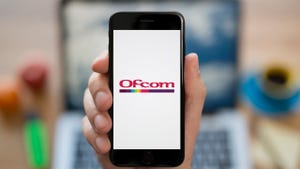Nokia SON to shore up EE networksNokia SON to shore up EE networks
EE, the UK’s biggest mobile operator, has deployed Nokia’s Self-Organizing Networks software to enhance network management and service quality.
June 2, 2021

EE, the UK’s biggest mobile operator, has deployed Nokia’s Self-Organizing Networks software to enhance network management and service quality.
Nokia also claims that the new deal confirms its position as the biggest supplier to BT, EE’s parent company.
Also included in the deal with EE is a Software Development Kit (SDK), with which EE can create its own custom SON solutions. This is important for operators like EE that have legacy networks supplied by multiple vendors.
Executives from both parties celebrated the deal with endorsement. “We see immense opportunities for the ways in which Self-Organizing Networks can support our mobile network to deliver the best experience possible for our customers,” Steve Holmes, RAN Design Director of BT, said in a press release. “Networks are complex ecosystems, with different vendors, technologies, and layers; automating some processes helps to overcome these difficulties. The result will be networks with enhanced customer reliability and service as well as reduced energy consumption. We see our strengthening partnership with Nokia as key to realizing these objectives,” he continued.
Mark Atkinson, SVP, Radio Access Networks PLM at Nokia, said in the same press release that “as mobile networks become more complex, maintaining high network quality and reliability through intelligent automation is paramount. As BT prepares to further its 5G deployment, Nokia SON streamlines automation needs, allowing network issues to be resolved effortlessly and to maintain reliable service without the need for outside contractors.”
Self-Organizing Networks (SON) is a type of software, often with many modules, that can automate different processes in network configuration, management, and optimisation. A typical example is the intelligent management of handover between cells when the connected device (e.g. a smartphone) is on the move to minimise dropped calls, and, increasingly important, broken data connection.
This becomes more critical to user experience with 5G when the coverage of each cell is smaller than in 4G, which makes handover more frequent. But this is just one example of what SON is about. Nokia claims its SON suites include modules for self-configuring (e.g. site creations), self-optimizing (e.g. optimized parameters and coverage usage), and self-healing (e.g. automated fault resolution).
About the Author
You May Also Like










.png?width=300&auto=webp&quality=80&disable=upscale)


_1.jpg?width=300&auto=webp&quality=80&disable=upscale)